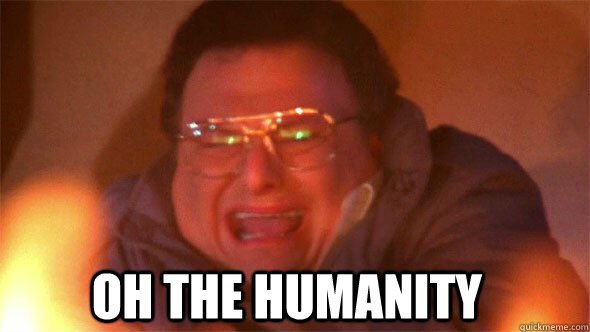https://www.bmj.com/content/362/bmj.k3948
Pandemrix vaccine: why was the public not told of early warning signs?
"In October 2009, the US National Institutes of Health infectious diseases chief, Anthony Fauci, appeared on YouTube to reassure Americans about the safety of the “swine flu” vaccine. “The track record for serious adverse events is very good. It’s very, very, very rare that you ever see anything that’s associated with the vaccine that’s a serious event,”1 he said.
Four months earlier, the World Health Organization had declared H1N1 influenza a pandemic, and by October 2009 the new vaccines were being rolled out across the world. A similar story was playing out in the UK, with prominent organisations, including the Department of Health, British Medical Association, and Royal Colleges of General Practitioners, working hard to convince a reluctant NHS workforce to get vaccinated.2 “We fully support the swine flu vaccination programme … The vaccine has been thoroughly tested,” they declared in a joint statement.3
Except, it hadn’t. Anticipating a severe influenza pandemic, governments around the world had made various logistical and legal arrangements to shorten the time between recognition of a pandemic virus and the production of a vaccine and administration of that vaccine in the population. In Europe, one element of those plans was an agreement to grant licences to pandemic vaccines based on data from pre-pandemic “mock-up” vaccines produced using a different virus (H5N1 influenza). Another element, adopted by countries such as Canada, the US, UK, France, and Germany, was to provide vaccine manufacturers indemnity from liability for wrongdoing, thereby reducing the risk of a lawsuit stemming from vaccine related injury...
The concerns, it seems, were prescient. A year later, signs of a problem with Pandemrix were emerging through postmarket reports of narcolepsy, predominantly among children and adolescents in Sweden and Finland.8 Multiple academic and government led studies subsequently judged that the relation between Pandemrix and narcolepsy was likely to be causal.91011 Over 1300 people are estimated to have been affected among the roughly 30 million vaccinated across Europe,12 including around 100 families in the UK...
Pandemrix and Arepanrix were designed for a pandemic and were removed from global markets after the pandemic. Whatever adverse events they may have caused, they are vaccines of the past. But the events of 2009-10 raise fundamental questions about the transparency of information. When do public health officials have a duty to warn the public over possible harms of vaccines detected through pharmacovigilance? How much detail should the public be provided with, who should provide it, and should the provision of such information be proactive or passive?
If history were to repeat itself, does the public have a right to know?"
Yes, the public has a right to know. Public health professionals also need to be very good at communicating risks as clearly as possible.
According to what you just posted, roughly 0.004% of the 30 million people who
received the H1N1 vaccine in Europe experienced an adverse side-effect of narcolepsy.
Comparatively, H1N1 had an estimated
infection-fatality-rate of about 0.01%. So about 1 out of every 10,000 people who got H1N1
died. Furthermore, it was estimated that
20% of the US population contracted this viral strain in '09/'10, and among this population, youth were particularly suscetptible (older adults likely had some immunity from exposure to older strains of H1N1).
So this was a virus you had a 20% chance of getting, and once you got it, you had a 0.01% chance of dying, especially if you were young. Assuming those two probabilities are independent, you had a roughly 0.002% chance of dying of H1N1 in '09/'10.
Flu vaccines are typically between
40-60% effective. They tend to be most effective
against H1N1 strains, putting effectiveness at roughly 60%.
So in Europe, there was a disease with a 0.002% chance of killing you. If you took a vaccine, this reduced the risk of dying to 0.0008%. The cost of this 60% reduced risk of dying was assuming a 0.004% risk of experiencing narcolepsy.
So obviously from a Public Health perspective, even if you knew in advance that there was a risk of increased incidence of narcolepsy (which you could not possibly know), you want as many people as possible to have the vaccine.
But you can see how communicating the specifics of this to help the general population understand is difficult. You are comparing risks for very unlikely events (dying from H1N1, negative vaccine side-effects). As soon as you start talking about risks in the 0.01% range and below, people don't care. But when you multiply that by millions of people, these things matter from a Public Health perspective.
If you have hacks out there trying to frame a 0.004% risk of narcolepsy (which was not in all vaccine formulations, only the first EU version) as a good reason for why we should avoid widespread utilization of a potential Sars-CoV2 vaccine (a disease estimated to be 10-100x deadlier than H1N1), this messaging becomes even more challenging.
---------------------------------------------------------------------------------------------
addendum: Fauci was correct, by the way. This is writen as some sort of "gotcha!" piece, but Fauci's quote was:
“The track record for serious adverse events is very good. It’s very, very, very rare that you ever see anything that’s associated with the vaccine that’s a serious event,”1 he said.
And indeed, the US H1N1 vaccine did not increase risk of narcolepsy, and even if it had, I think the 1 in 23,000 incidence of this that was experienced in the EU would qualify as "very, very, very rare."






